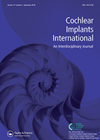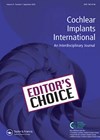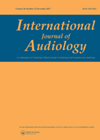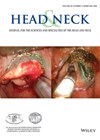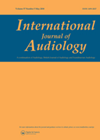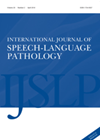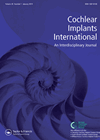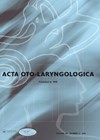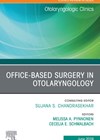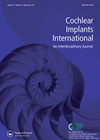
Journal Reviews
Quality of life in adolescence
Adolescence can be a difficult time and the added complexity of a hearing loss can exacerbate feelings during this period. In the literature, there are mixed findings that show while some children with hearing loss score poorly on some aspects...
Dead regions in patients with cochlear implants
The very nature of a dead region (DR) in a cochlea means that they are often found in patients who are eligible for cochlear implants. However, a variety of different hearing configurations are found in those with DRs because of...
Herpes zoster and SSNHL
Some studies suggest that viral infections may increase the risk of a sudden sensorineural hearing loss (SSNHL). The described longitudinal study explored whether herpes zoster may be a factor that increases the risk of SSNHL. Medical history in reference to...
Active smoking predicts poor outcome in HPV positive oropharyngeal squamous cell carcinoma
Tobacco smoking is a well-known risk factor in human papilloma virus (HPV)-negative head and neck squamous cell cancer. Its effects include increased risk of treatment failure, distant metastases and reduced overall survival. HPV has been increasingly implicated as a causative...
Reasons for attending annual hearing aid review appointments
The aim of this study was to investigate what factors influence hearing aid users’ decision to attend or not attend an annual hearing aid review (HAR) appointment. Two separate surveys were created for attendees and non-attendees. An invitation letter was...
Speech in noise hearing difficulties
The phenomenon of speech understanding in noise in normal hearing people attracts the interest of researchers continuously. This study’s aim was to further explore the possible reasons behind these difficulties. The participants were 50 adults that reported having normal hearing...
Doing it for the people: how to do speech and language therapy
This review article distils 58 studies, collating information from people with aphasia, their families and clinical speech and language therapists summarising the seven habits of highly effective aphasia therapists. Habit 1: Effective therapists invest time in and prioritise relationships with...
X-ray vs. intraoperative testing for determining cochlear implant placement
Most cochlear implant centres confirm electrode position after surgery using X-rays to ensure optimal electrode placement. As well as transorbital view X-rays, this team check placement using impedance measures and neural response telemetry (NRT) performed intraoperatively. The former indicates whether...
Intratympanic steroids - to give or not to give?
The treatment of idiopathic sudden sensorineural hearing loss (ISSNHL) is controversial and different modes of steroids have been tried without any universal consensus. Various authors have reported combined oral and intratympanic steroid therapy in SSNHL, with consistent results in several...
Office-based otology procedures
This edition of the Otolaryngologic Clinics of North America covers office-based surgery in ENT. This article discusses procedures in otology that could be performed in the outpatient setting and covers innovations in office-based otologic procedures. The endoscope features prominently in...
How to train adults with single-sided deafness and cochlear implants
Cochlear implantation (CI) in patients with single-sided deafness (SSD) has been carried out in Perth, Australia from 2008. It poses challenges to clinicians and patients who are trying to tune in the poorer ear while still having a normally hearing...
Hearing disability questionnaires
This is a very interesting study concerning the validity and readability of 10 hearing disability English language questionnaires available for clinical use. The questionnaires were assessed against the World Health Organisation’s International Classification of Functioning, Disability and Health framework (WHO-ICF)....

